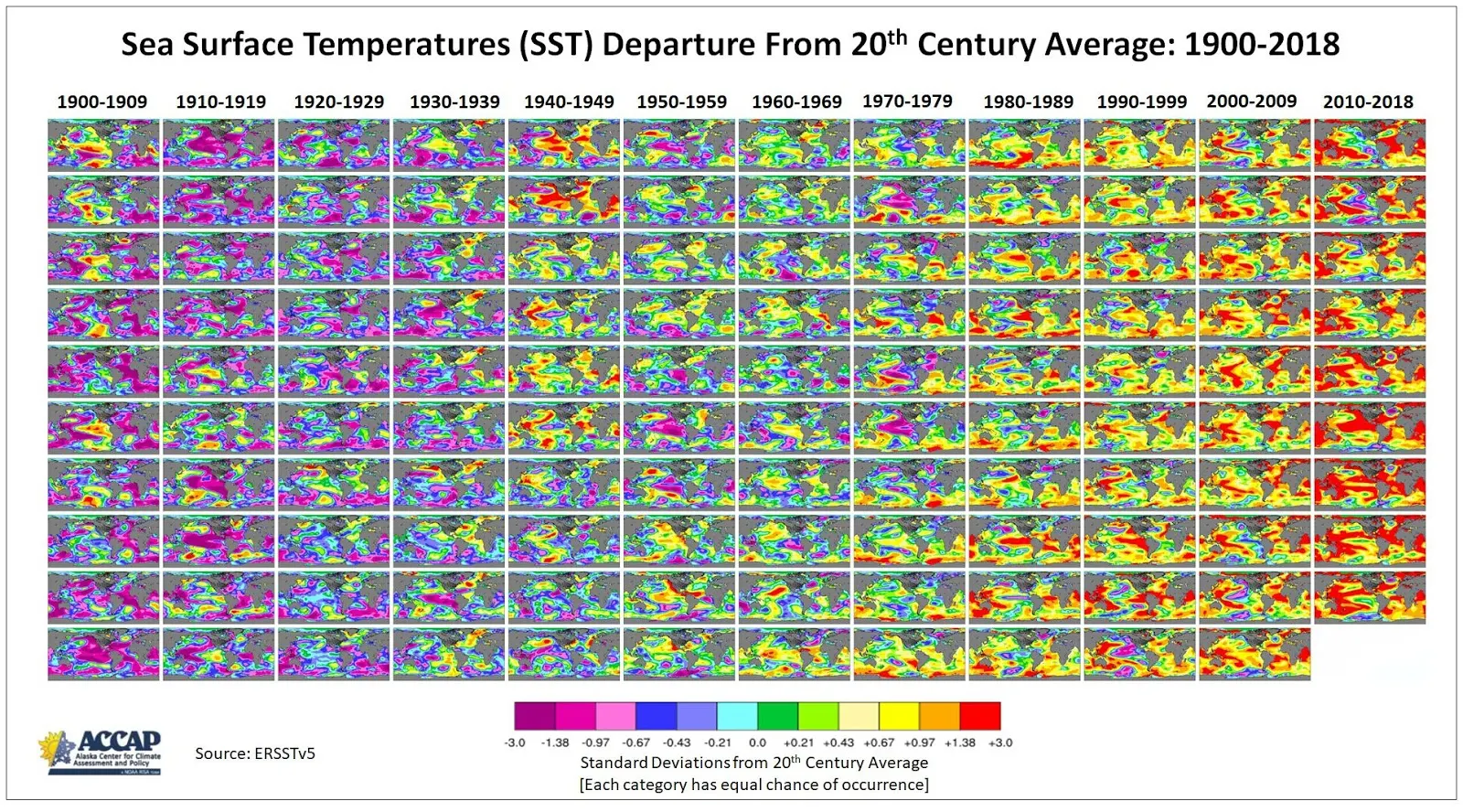Sea Surface Temperatures Departure From the 20th Century Average (SST anomalies) represent the variation in sea surface temperatures compared to the long-term average recorded during the 20th century. This metric is a crucial component of climate monitoring and is used to assess the warming or cooling trends of oceanic regions.
The departure from the 20th-century average serves as an indicator of anomalies, highlighting areas where sea surface temperatures deviate from the historical norm. Positive anomalies, indicating warmer-than-average temperatures, can be indicative of climate phenomena such as El Niño events, which involve the periodic warming of the central and eastern equatorial Pacific Ocean. Negative anomalies, conversely, signify cooler-than-average temperatures and may be associated with La Niña events.
Monitoring SST anomalies is vital for understanding climate variability, as sea surface temperatures influence weather patterns, ocean circulation, and ecosystems. Moreover, anomalies contribute to our comprehension of broader climate change trends, providing insights into the warming of the world's oceans and its potential impacts on weather systems, sea levels, and marine life. The analysis of SST departure from the 20th-century average is a valuable tool for climate scientists and policymakers in assessing the ongoing changes in Earth's climate system.

This post may contain affiliate links. As an Amazon Associate, I earn from qualifying purchases.